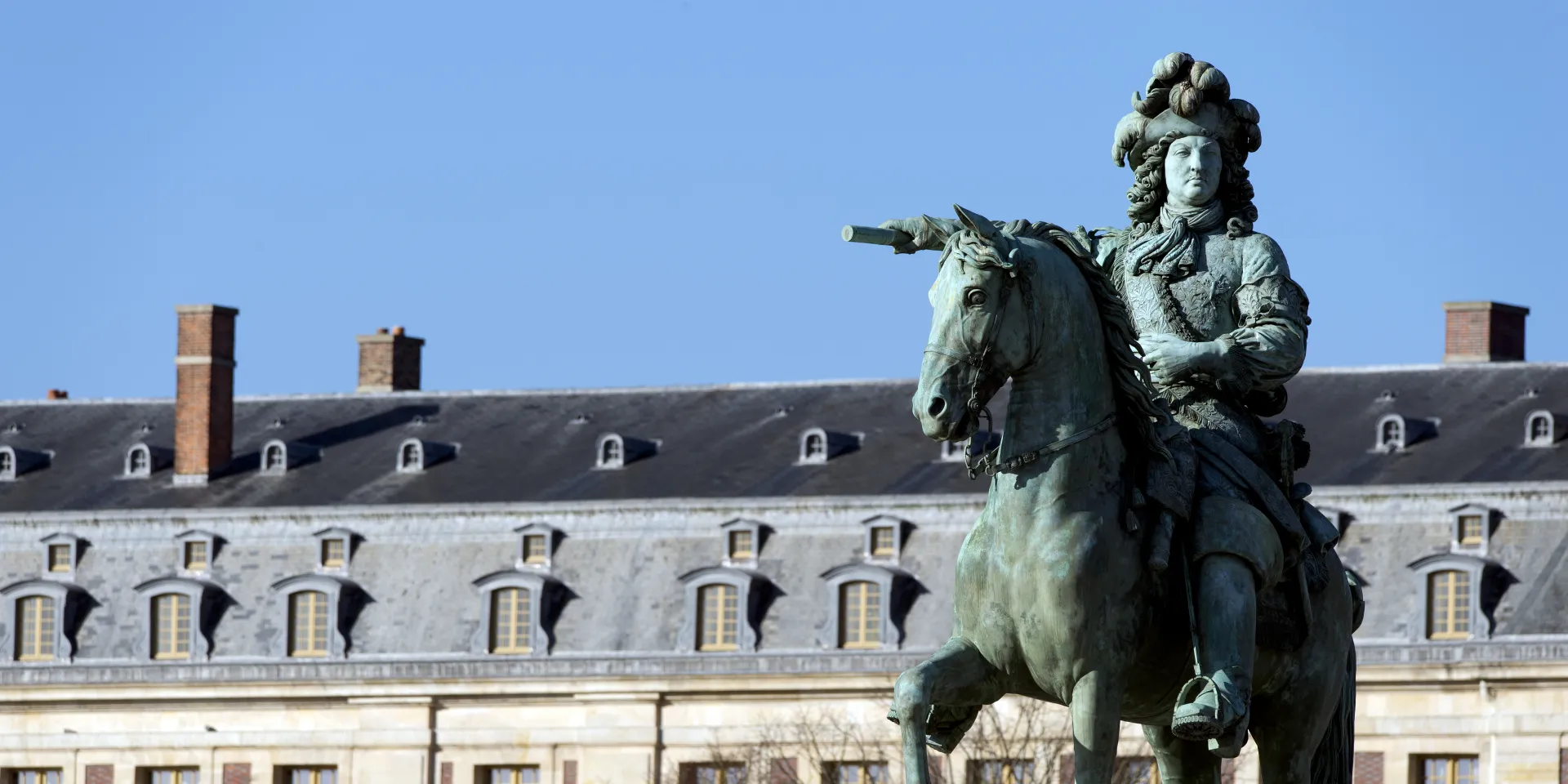At the time Louis XIII first came to hunt here and decided at the end of 1623 to build a hunting lodge, Versailles was a prosperous village. Further down the hillock on which the hunting lodge was built, the village lay on the route that livestock from Normandy followed on its way to the Parisian abattoirs. Successive enlargements of the lodge that became the Palace (especially the building of the Grand Commun, completed in 1684) and of the new town almost entirely wiped out the village. In its place grew a district, soon called "Old Versailles", in memory of it.
1671: the beginnings of the new town of Versailles
Following an order by the king signed 22 May 1671 in Dunkerque, it was today's Notre-Dame district, north-east of the Palace, that first began to take shape. The increasingly frequent sojourns of Louis XIV and his court at the Palace of Versailles, as well as festivities sometimes attended by thousands of people, called for lodgings and livery stables and so on, and the proper level of comfort, on a grand scale. Louis XIV encouraged this when he declared in May 1671 that he would "grant space to all persons wishing to build from the Pump of the aforesaid Versailles to Clagny farm (…) provided they respect the state and symmetry of the buildings". The town of Versailles thus spread out around the Palace along the three major avenues that converge toward it.
The district of Notre-Dame
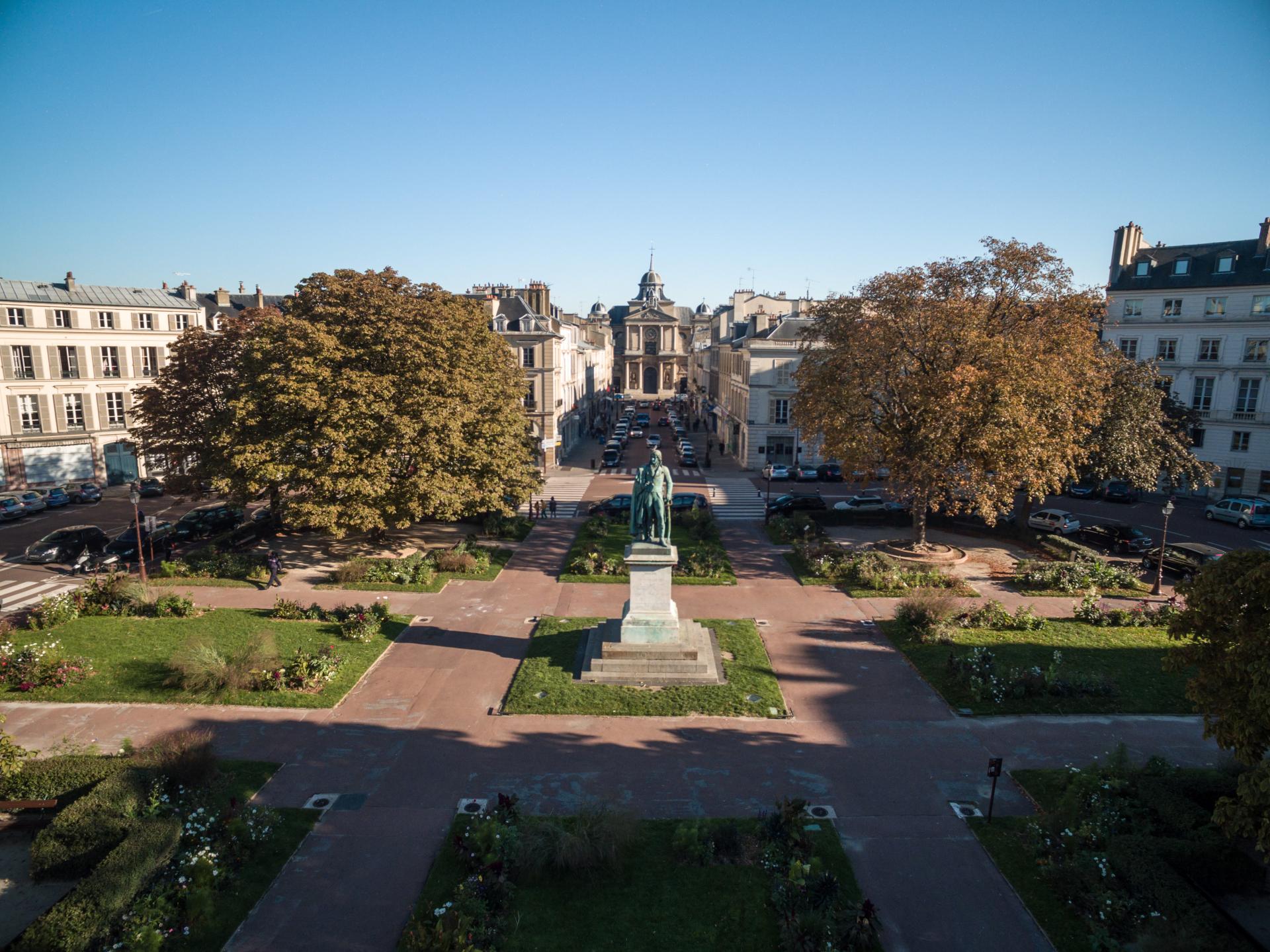
Place Hoche
© Ville de Versailles / Drive Productions
Initially, the "New Town" to the north grew rapidly between the avenue leading to Saint-Cloud and Clagny pond. Destined to accommodate the growing numbers of people serving the Court and King, it was designed by architect Louis Le Vau and his associate, François d'Orbay. Place Hoche (formerly Place Dauphine) linked it to the Palace in 1674, based on a plan that later became a model for town planning. A few years on, in 1686, the architect Jules Hardouin-Mansart was commissioned to build the church of Notre Dame for the royal parish.
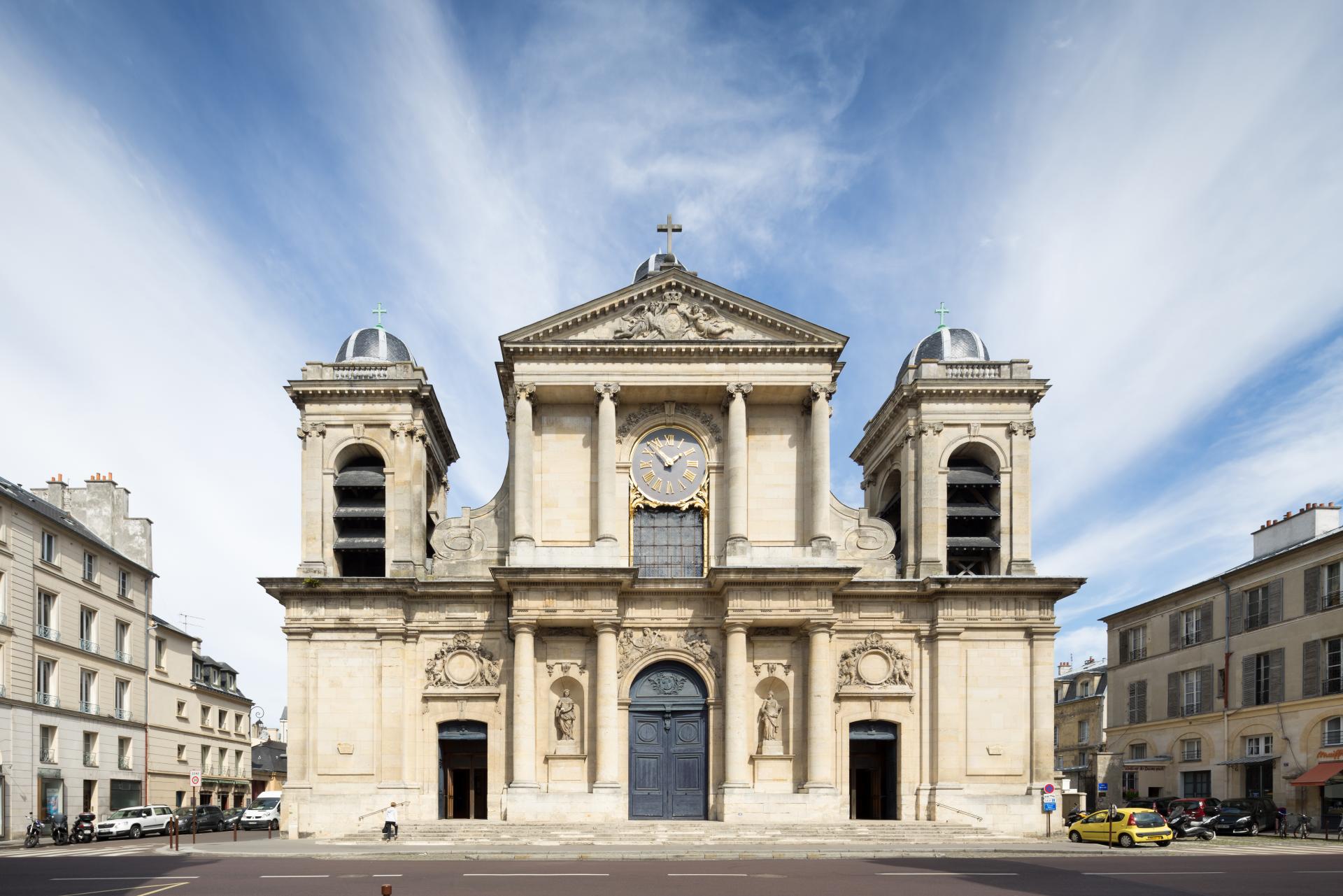
Notre-Dame Church (Rue de la Paroisse)
© Ville de Versailles / Drive Productions
When Louis XIV decided in 1677 to make the Palace of Versailles his main residence and to establish his government there, the town saw a new surge of building work. The king put Mansart in charge of the necessary developments, including the Great Stables for horses, the Small Stables for coaches, and the Grand Commun for the royal kitchen staff, which contained cellars and kitchens for the Dauphin and others close to the King. The Royal Vegetable Garden was created by the agronomist Jean de La Quintinie, and drawn at the request of Louis XIV, offers a theatrical vision of the crops intended to supply the court and the fruits and vegetables grown in this tradition.
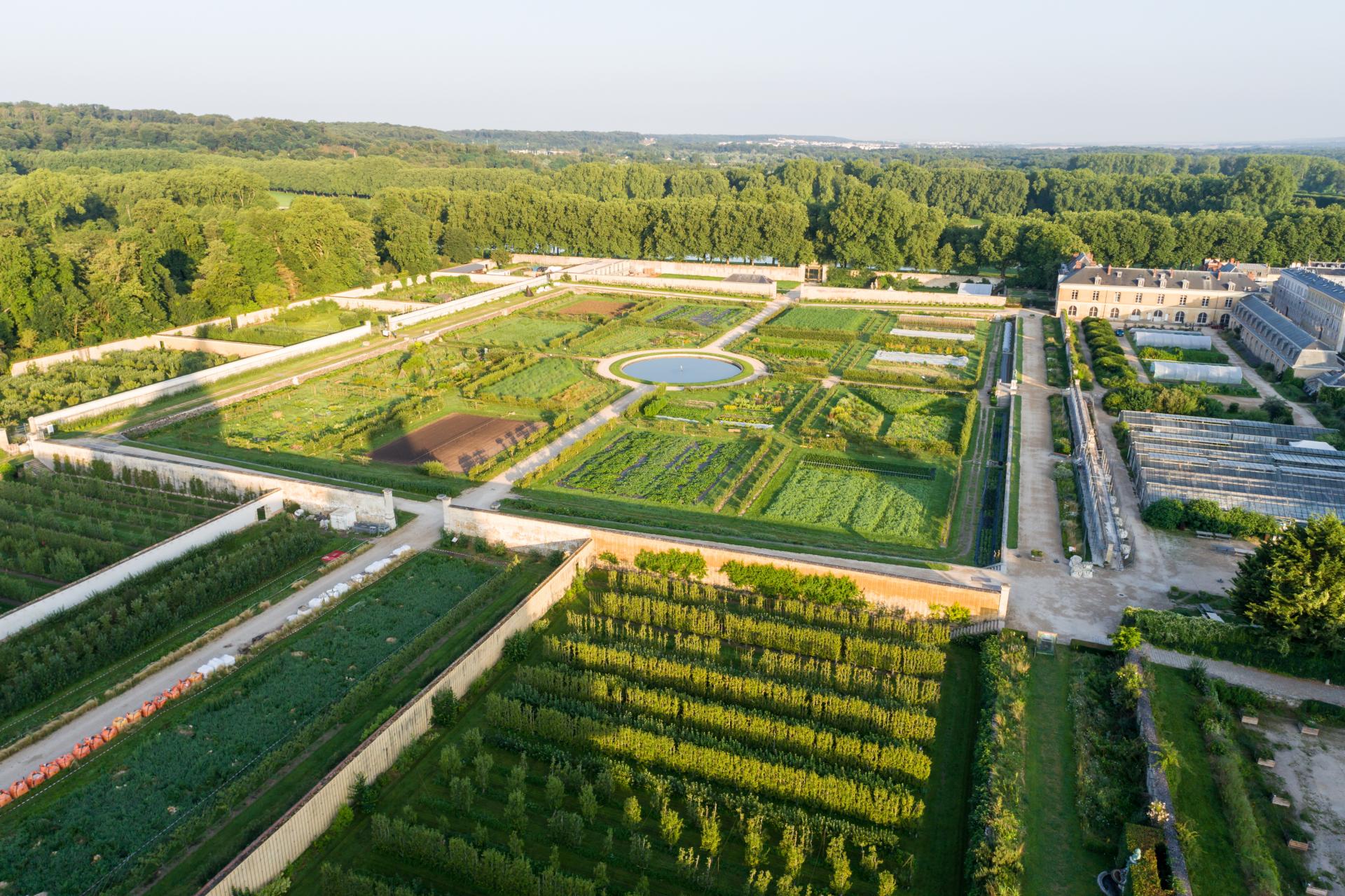
Royal Vegetable Garden
© Ville de Versailles / Pierrick Daul
The district of Saint-Louis
The number of officials in the service to the king continued to grow, and in 1685 Louis XIV commissioned Mansart to design another district on the site of the old village and Louis XIII's hunting reserve, the Deer Park. The district of Saint-Louis was laid out on a grid pattern and primarily developed in the 18th century after the return of Louis XV, now king, and his court.
In 1725 a church was constructed for the inhabitants of the new Saint-Louis district. It quickly proved to be too small and was replaced by the cathedral of Saint-Louis, built between 1742 and 1754 by Jacques Hardouin-Mansart de Sagonne, the grandson of Louis XIV's architect.
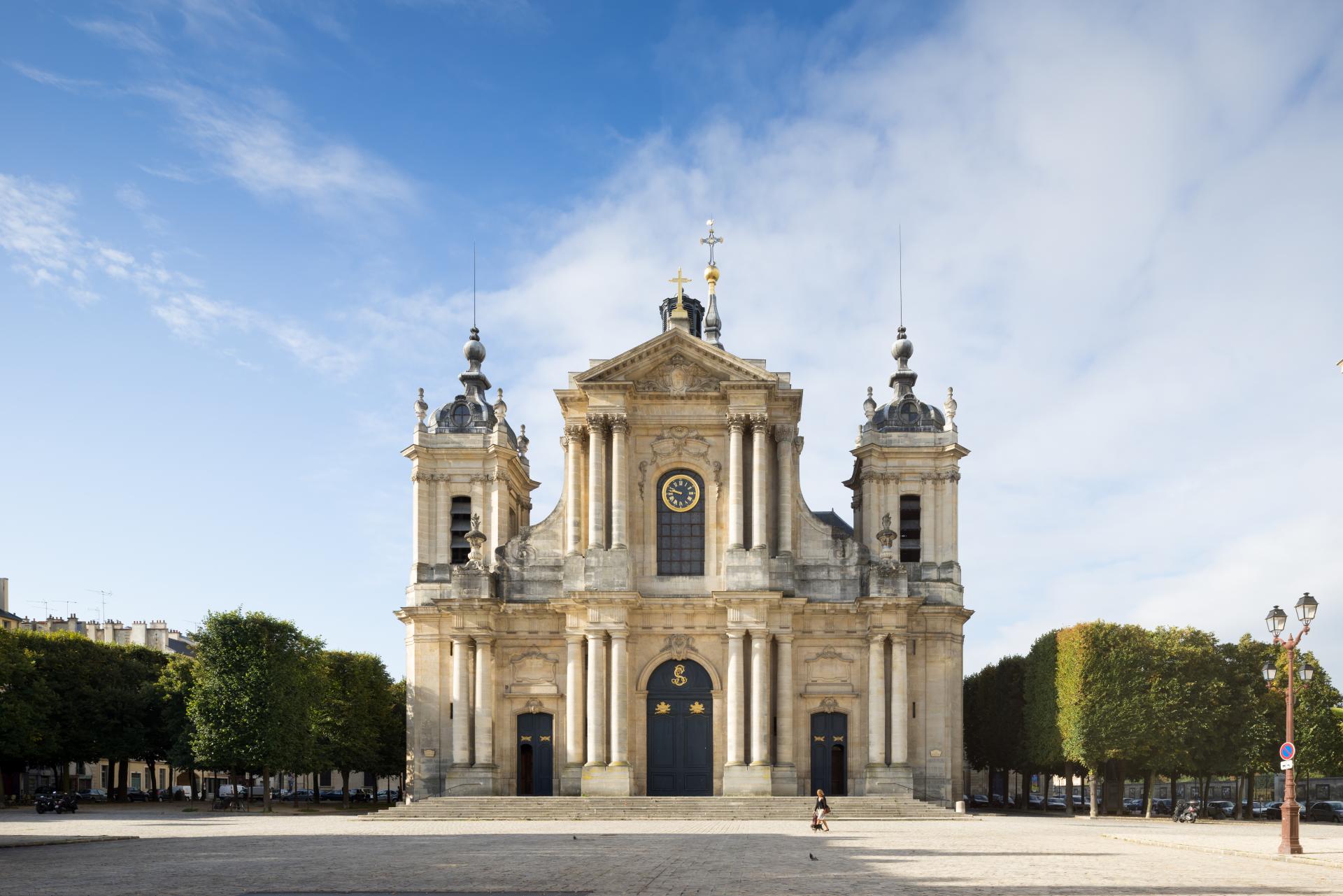
Saint-Louis Cathedral
© Ville de Versailles / Nicolas Borel
The extension continued in the 18th century, still respecting the town planning envisaged by Louis XIV
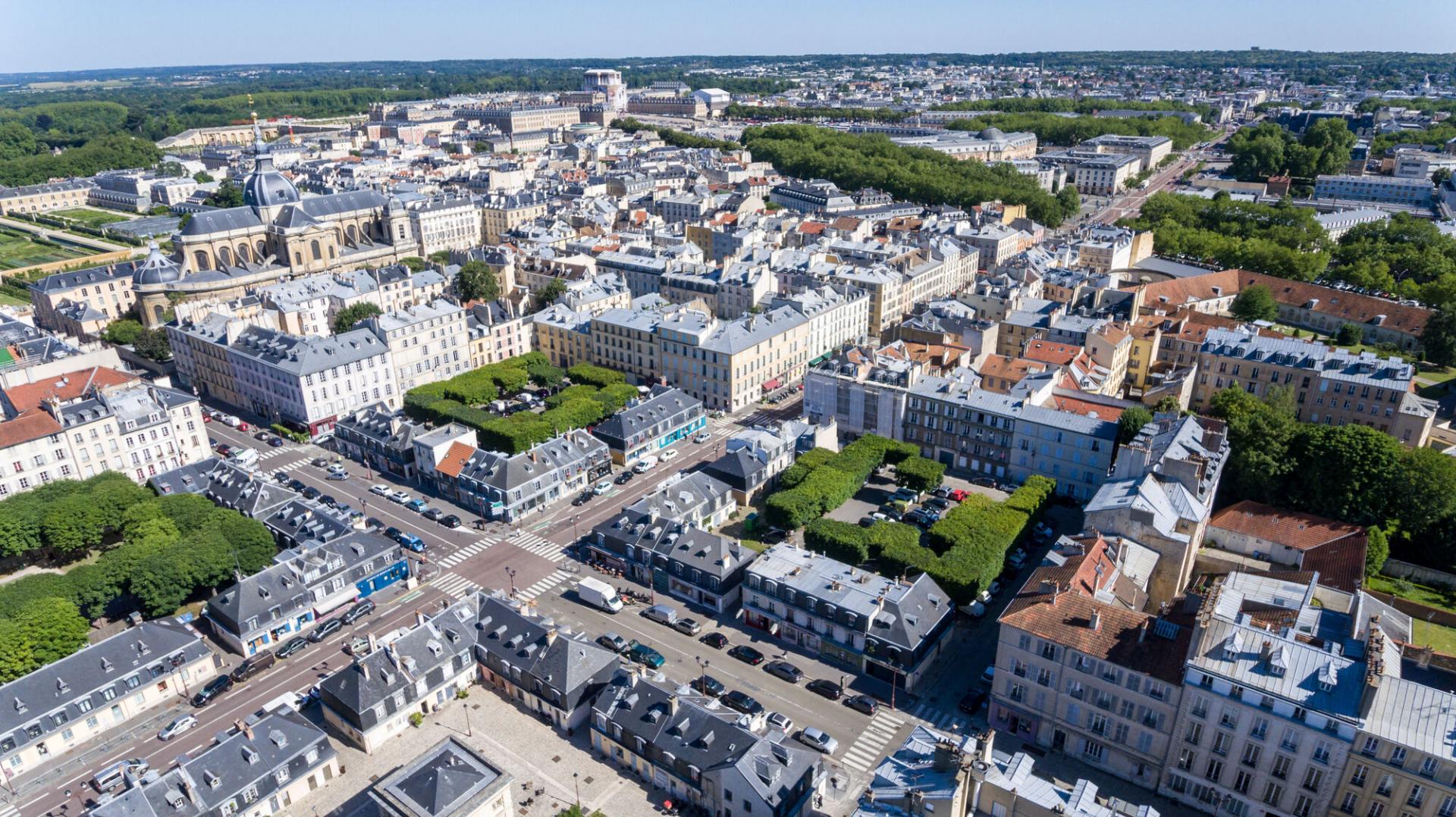
Saint-Louis Square
© Ville de Versailles / Gilles Bocs
The town continued to grow during the 18th century to the North and South of the Palace, sometimes by order of the King. In 1725 the Notre-Dame market and in 1736 the Saint-Louis market were laid out in "squares", each devoted to specific foodstuffs.
The Notre-Dame market has always been located in the same place since the 17th century, and it is the second largest market in Île-de-France.
As for the Saint-Louis market, it takes the form of a set of "barracks" organized in squares, and intended to house the market stalls under Louis XV, before being transformed into houses. This urban singularity of the Saint-Louis market is unique in France. Today, they house charming boutiques, some of which are dedicated to arts and crafts.
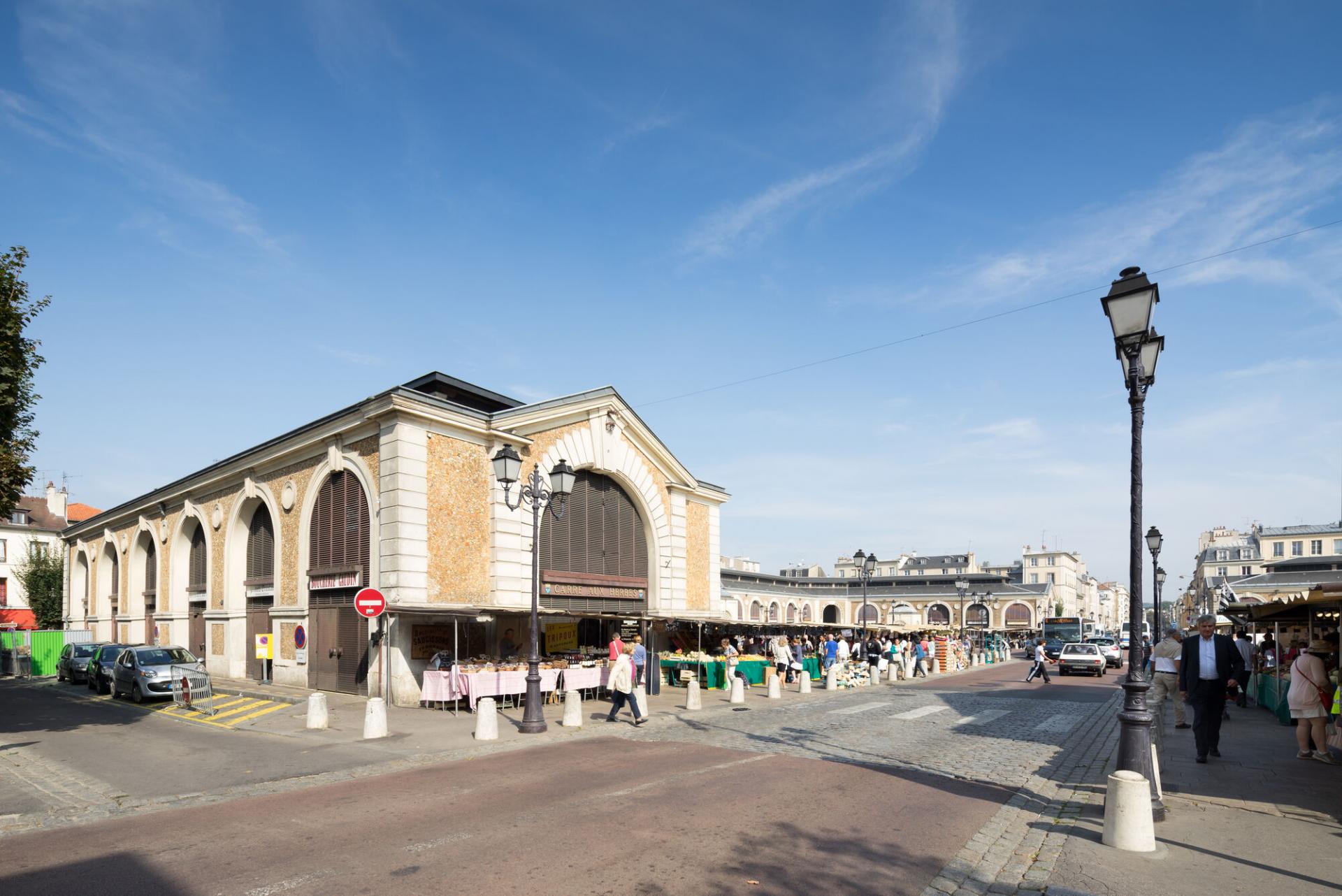
Notre-Dame Market
© Ville de Versailles / Nicolas Borel
Not far from the Notre-Dame market, in the Passage de la Geôle, is the antique market, a lively market of art and antiques located in the heart of the city in a pedestrian passage preserved since 1671.
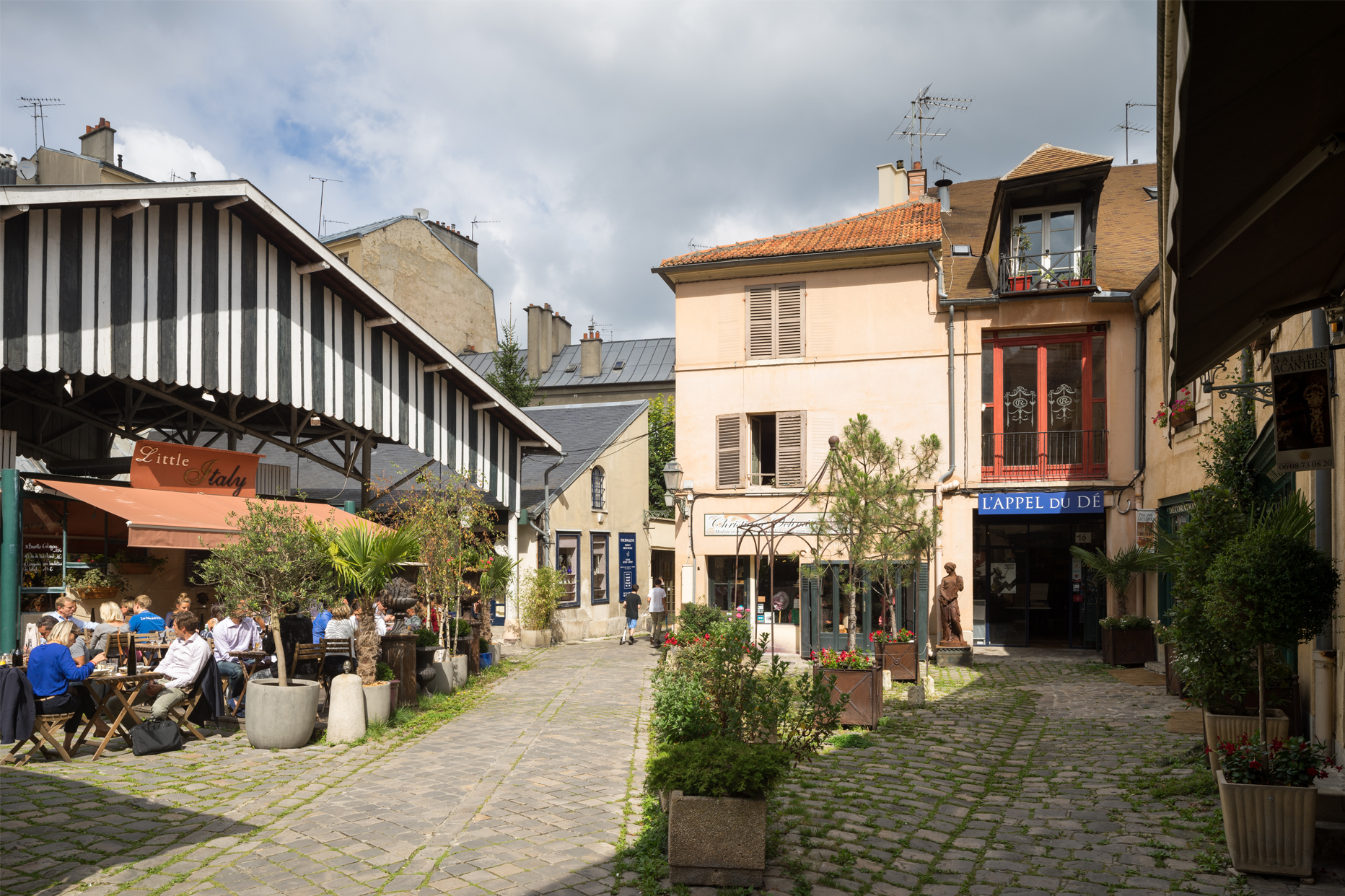
Quartier des Antiquaires - Passage de la Geôle.
© Ville de Versailles / Nicolas Borel
The Boulevard de la Reine (1733) became a major new route bordering the pond at Château de Clagny, which was drained at the end of the reign of Louis XV to make way for the construction of the Prés district. The buildings on this boulevard include Hotel Lambinet (1751), which has been a museum since 1932. This former private mansion contains a large number of works and documents relating to the history of the royal city, the art of living in the 18th century and the Rights of Man.
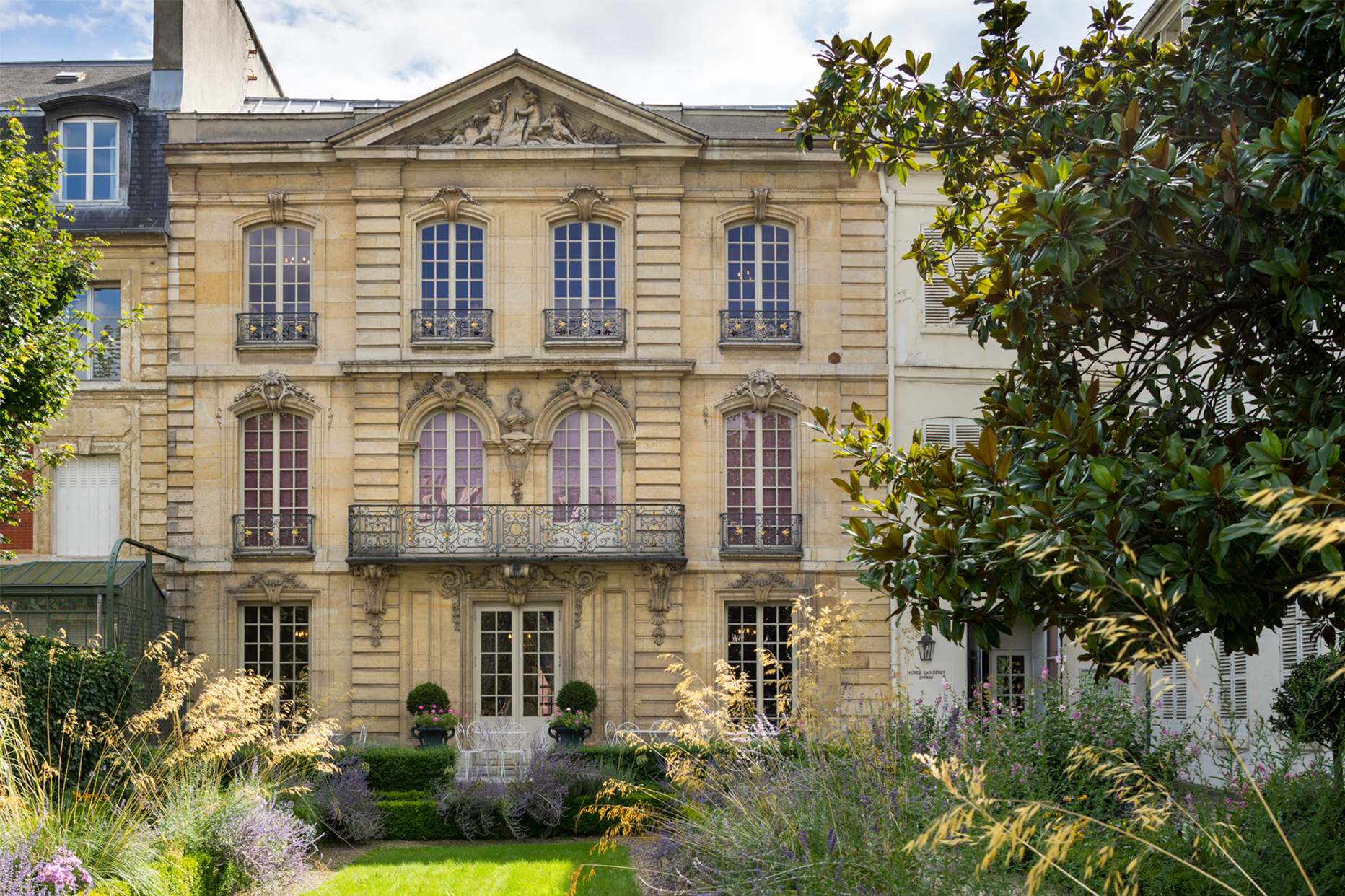
Lambinet Museum
© Ville de Versailles / Nicolas Borel
Louis XV also encouraged the construction of new administrative buildings. To centralise the numerous departments that had been dispersed throughout Paris, in 1760 Jean-Baptiste Berthier built the Ministry for War near the Palace, followed by the Ministry for Foreign Affairs and the Navy. It was here that the 1783 peace treaty between France and Great Britain was negotiated, ending the American War of Independence.
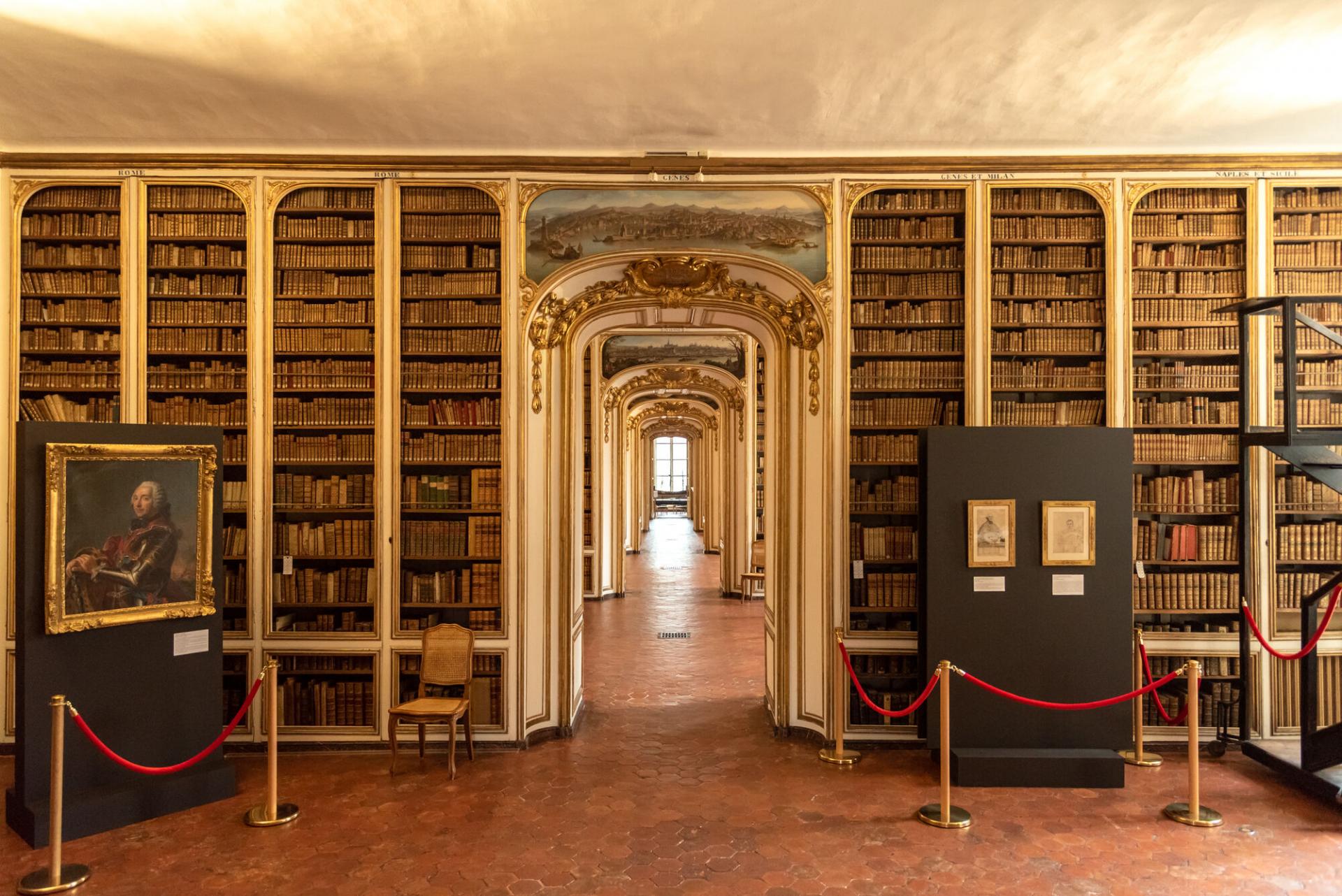
Central Library - Galery of foreign affairs
© Ville de Versailles / Pierrick Daul
The Queens of France also contributed to embellishing the town of Versailles. Lycée Hoche (1772), by architect Richard Mique, is a former Augustinian convent founded by the wife of Louis XV, Marie Leszczyńska, for the education of young girls. As for the Montansier Theatre, it is one of the oldest Italian-style theaters in France. It was inaugurated in 1777 in the presence of Louis XVI and Marie-Antoinette, and benefited from the support of Marie-Antoinette who frequently attended the performances that were given there.
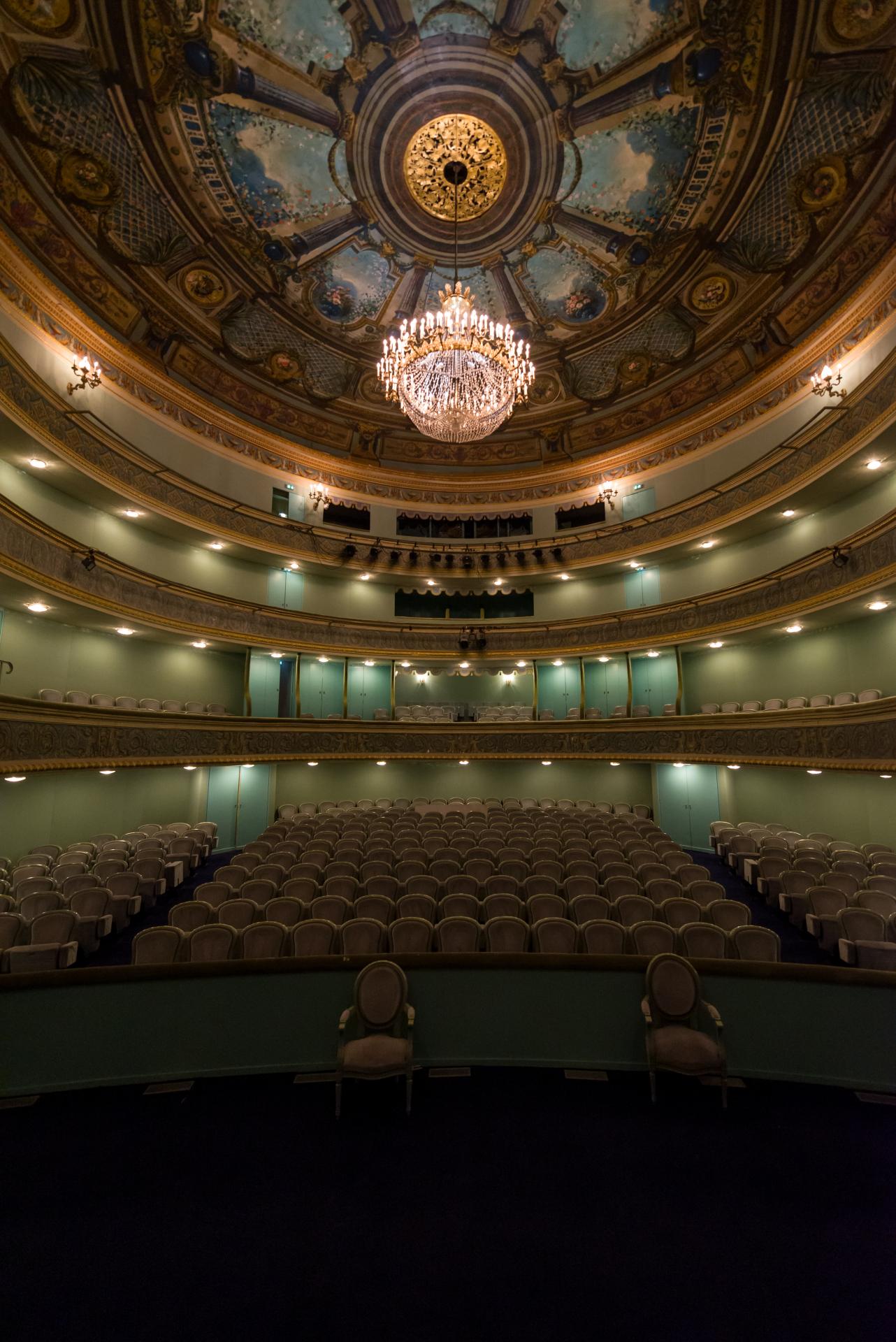
Montansier Theatre
© Ville de Versailles / Pierrick Daul
The French Revolution, however, which started in Versailles, put a sudden end to its reputation and development. The departure of the monarchy and the government plunged the town into economic recession: the population dwindled from 60,000 in 1789 to 25,000 at the start of the 19th century.
The proclamation of the German Empire in the Hall of Mirrors and the Paris Commune in 1871 once again thrust Versailles brutally into the spotlight of the nation's history. The election of the Presidents of the Third and Fourth Republics, and the holding of the Congress to vote on revisions of the Constitution in the Palace, gave it another political role as it now became one of the focal points of the Republic.
New roles for Ancien Régime buildings
In recent decades buildings dating from the Ancien Régime have been given new leases on life. The Menus-Plaisirs building (1748), which housed administrative departments in charge of Court ceremonies and entertainment, and where the Estates General met in 1789, is now home to the Baroque Music Centre. Similarly, the House of Italian Musicians (1752), a former leisure residence reconstructed by Mansart de Sagonne, currently houses the headquarters and the museum of the Compagnons du Tour de France.
Last but not least, the old royal hospital in the heart of the town, built under Louis XVI by Charles-François d’Arnaudin, has recently been converted into a group of housing units and shops designed by architect Jean-Michel Wilmotte, called Espace Richaud. Completed only in 1859, this hospital formerly intended for the sick and wounded of the city, has in its center a magnificent chapel of the eighteenth century that now hosts the exhibitions of the city.
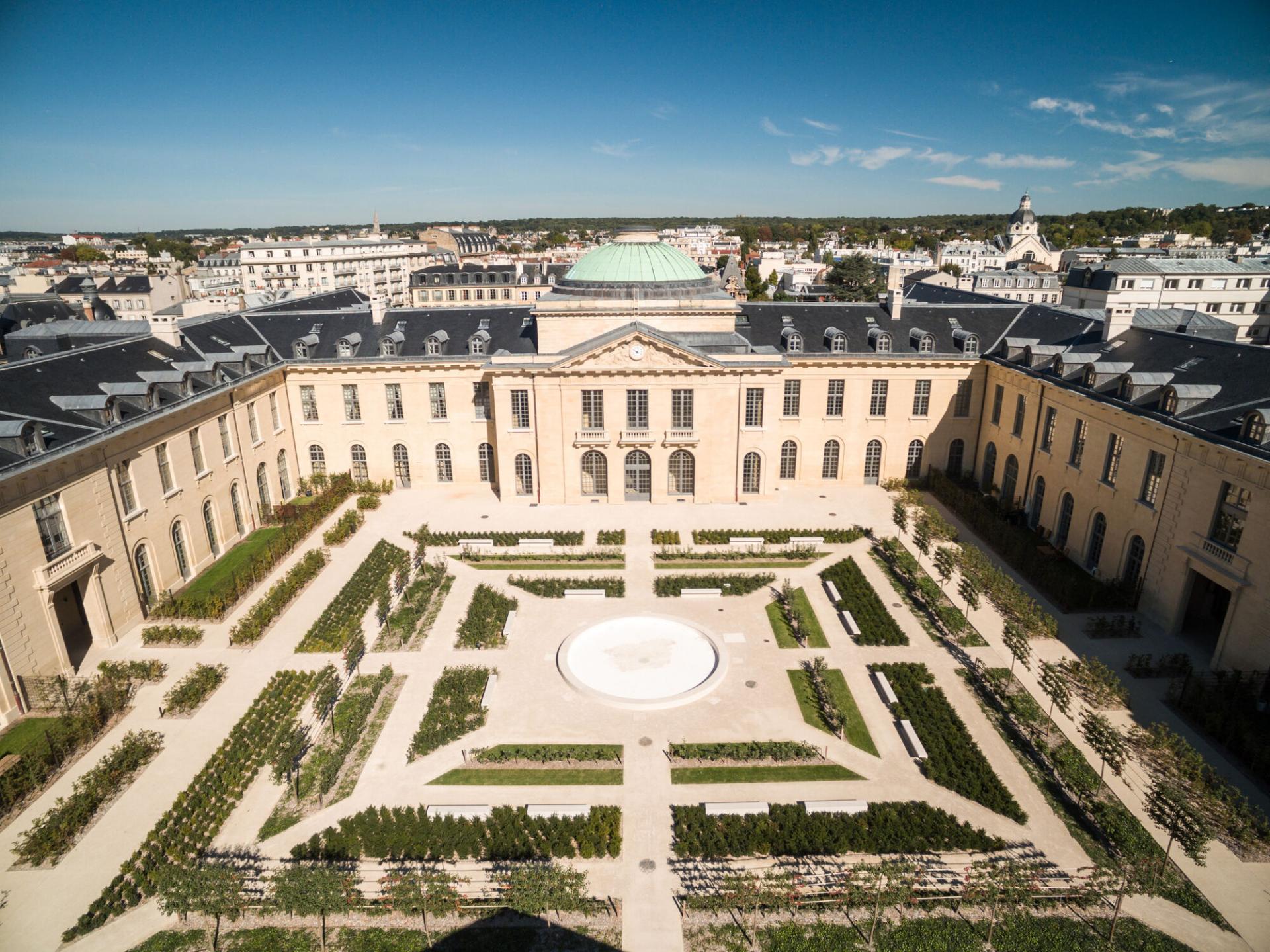
Espace Richaud
© Ville de Versailles / Drive productions



